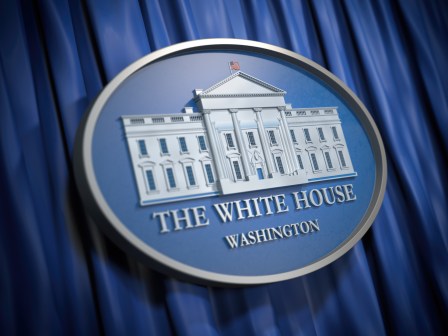Outgoing White House AI chief: ‘I’m hoping that my legacy is showing how to lead in the development of nonpartisan science’

Lynne Parker, the outgoing director of the National Artificial Intelligence Initiative Office within the White House, focused her tenure on finding nonpartisan solutions to reduce potential harms of AI and establishing principled guardrails for the new technology during her time leading the office.
In an exclusive interview with FedScoop, Parker said the federal government is well aware of the potential pitfalls of AI and has actively worked to mitigate its harms while trying to use the technology to solve major societal challenges. The roboticist is one of the only technology officials to serve under both President Donald Trump and President Joe Biden in the White House Office of Science and Technology Policy over the past four years.
“There has been a big increase in awareness and understanding of the potential harms that AI use might present to people in different contexts, whether it be decisions about access to resources, such as housing or student loans, or whether it be something like judicial sentencing. The inappropriate uses of these technologies that can cause harm are well known,” said Parker, speaking with FedScoop earlier this month before leaving her post at the National AI Office.
“So I think, the question now is, how to make sure that we anticipate challenges or problems that might come along and have an appropriate implementation approach that considers what the risks of AI are and appropriate steps to ensure those harms do not happen or that risks are mitigated,” Parker added.
The National AI Initiative Office, launched in January 2021 under President Donald Trump, is responsible for coordinating artificial intelligence research and policymaking across government, industry and academia. It is focused on implementing a national AI strategy as directed by the National Defense Authorization Act of 2021, to increase research investment, improve access to computing and data resources, set technical standards, build a workforce, and engage with allies.
“So I think, the question now is, how to make sure that we anticipate challenges or problems that might come along and have an appropriate implementation approach that considers what the risks of AI are.”
Lynne Parker, outgoing director of the National AI Initiative Office
Parker, who has a doctorate in computer science from the Massachusetts Institute of Technology, previously spent over 20 years teaching engineering at the University of Tennessee, said the creation of an AI risk management framework has been a major part of her work for the AI initiative that she expects this will reduce fear around the technology.
She said the National Institute of Standards and Technology is currently drafting such a framework that will lay out a common voluntary approach that federal government agencies and private sector companies can use in order to find a structured way to think about AI risk and find ways to reduce potential harms.
Parker, who also helped lead the National Artificial Intelligence Research Resource (NAIRR) task force, addressed fears associated with the task force which works with Big Tech companies like Google and IBM to provide computational infrastructure and data.
The purpose of NAIRR is to use make computational resources from wealthy companies like Google and IBM available to a larger group of underserved and underrepresented communities in academia and the small business world in order to allow them to innovate and create AI software and tools.
However, there have been concerns that Big Tech companies could use the NAIRR partnership to benefit themselves by capturing the data and information of those who use their computational resources, thereby creating security and privacy risks, which consumers have faced frequently in the past decade.
Parker said this would not be an issue because of safeguards the U.S. government has put in place.
“No, the Big Tech companies, would not have access to any of that, they’re purely providing a computational service to the research community, but they would not have the ability to tap in, in a side channel to what the researchers and others are doing with it,” Parker said.
Parker, who also previously served at the National Science Foundation as division director of information and intelligent systems, said she’s always been focused on bipartisan and bicameral ways of using AI to improve the government and society at large.
“I’m hoping that my legacy is showing how to lead in the development of nonpartisan science, the AI policies and initiatives and initiatives that has long lasting positive impact for the nation and around the world,” said Parker.
“I’ve worked to create a future where AI is used responsibly, to improve the quality of life of all Americans and address global challenges, to increase our nation’s economic competitiveness and advance our national security,” she added.
When asked about her experience working under President Trump versus President Biden and their respective approaches to AI, she said that although some differences did exist, there were many more areas of commonality in their approach.
She highlighted that both administrations were highly supportive of advances in AI and their actions to push the technology forward were more important than the political process of how decisions were made in each administration.
While Parker, 61, spends much of her working her professional life immersed in some of the most advanced examples of AI, she remains fascinated by the practical ways the technology has changed our everyday experience—including how we drive.
“As a roboticist, I have been delighted to see all of the driver-assist capabilities that have now become commonplace in our cars. Capabilities like lane keeping assist systems are very much like the early programs I had my students code for robots that would do wall following. And adaptive cruise control is very similar to getting robots to follow each other at the right distance,” Parker said.
“It has been rewarding to me to see that these technologies have been improved enough to be features on most new cars you buy today. Now, in my case, I lean on the thrifty side, so until recently I’ve been driving a 14-year-old vehicle that hasn’t had these features. I could only appreciate the driver assist features when I got a rental car. But just recently, I got a new car and the most important features to me in selecting that car were these driver-assist capabilities. I’m now very much looking forward to enjoying them on a regular basis,” she added.





